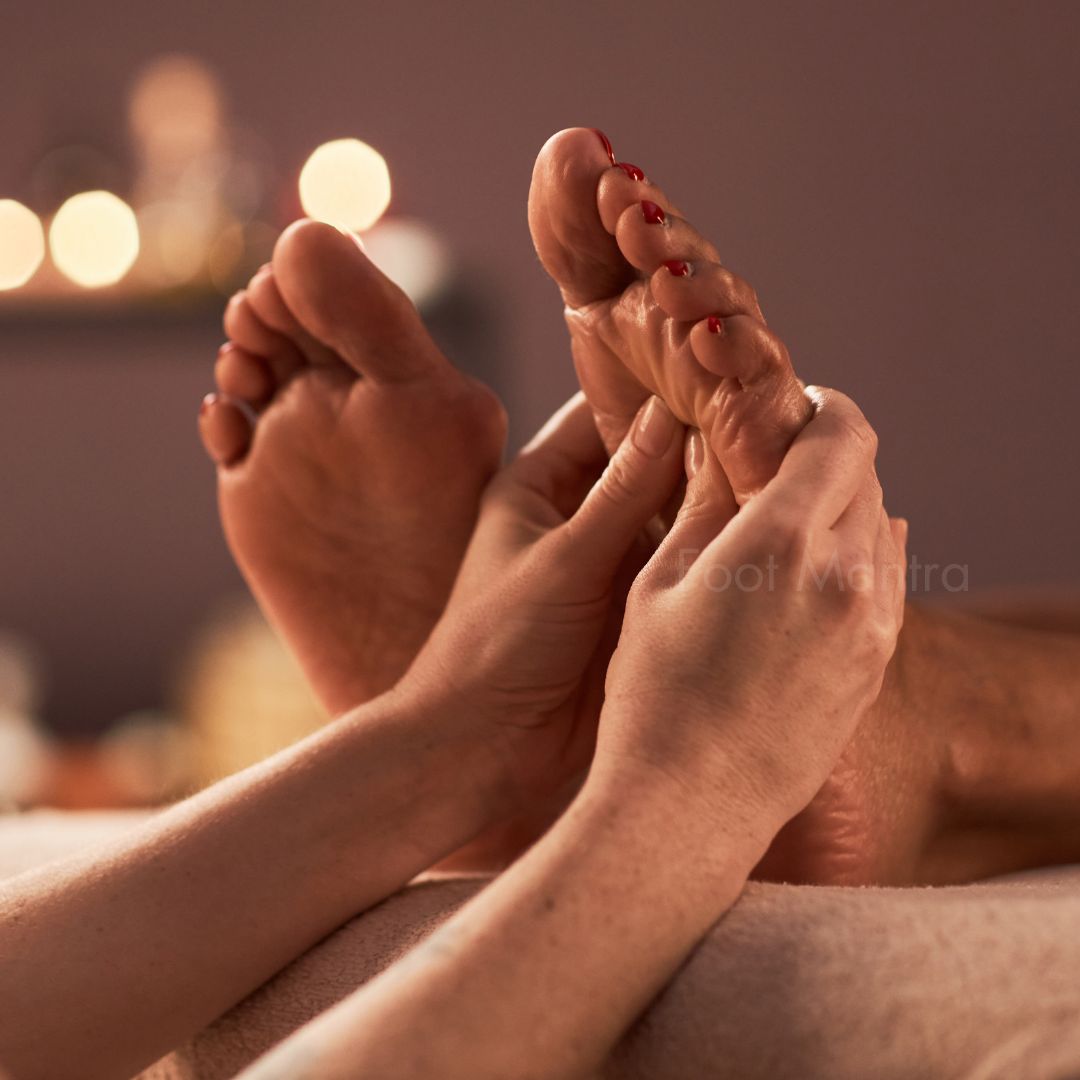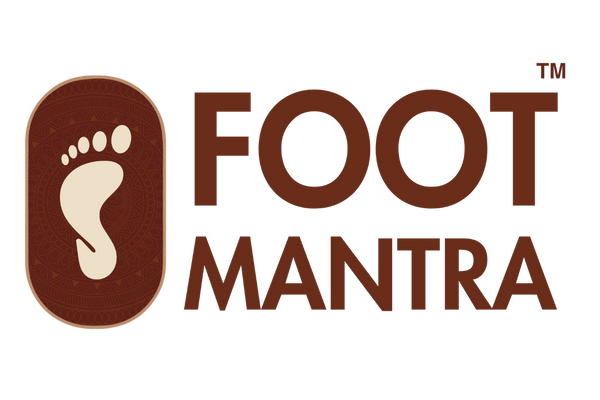
Foot Reflexology Techniques: Unlocking the Healing Power of Your Feet
Share
Foot reflexology is an ancient therapeutic practice that has gained popularity around the world for its ability to promote relaxation, reduce stress, and improve overall health. Based on the belief that specific points on the feet correspond to different organs and systems in the body, reflexology works by applying targeted pressure to these reflex points. But how exactly do reflexologists apply these techniques? In this blog, we'll explore various foot reflexology techniques and how they can help enhance your well-being.
What is Foot Reflexology?
Before diving into the techniques, let's briefly recap what foot reflexology is. It is a holistic treatment where practitioners apply pressure to specific points on the feet, which are thought to be connected to various organs and systems in the body. The goal is to balance energy, stimulate healing, reduce tension, and promote relaxation.
Reflexology works by using the feet as a map of the body. The idea is that certain areas on the feet correspond to specific body parts, such as the heart, lungs, digestive system, and more. By targeting these reflex points, reflexologists aim to release blockages, improve blood circulation, and encourage the body to heal naturally.
Common Foot Reflexology Techniques
Foot reflexology is typically performed by professional reflexologists, but some techniques can also be practiced at home for relaxation or self-care. Here are a few of the most popular and effective reflexology techniques used during a session:
1. Thumb Walking
One of the most common techniques in foot reflexology, thumb walking involves using the thumb to apply rhythmic pressure along specific reflex points on the feet. The thumb is moved up and down or side to side in a "walking" motion, which helps to stimulate the reflex zones and activate the corresponding organs or systems. This technique is effective for addressing issues like tension, pain, or fatigue.

How to perform thumb walking:
- Place your thumb on the reflex point you wish to target.
- Apply steady pressure and move your thumb in a "walking" motion across the area.
- Adjust the pressure based on comfort, making sure to maintain a consistent rhythm.
2. Finger Rolling
Finger rolling involves using the fingers, particularly the index and middle fingers, to apply gentle pressure and roll across the reflex points. This technique is often used for larger reflex areas, such as the arch of the foot or the ball of the foot. Finger rolling helps relax the foot and stimulates the reflex points without causing discomfort.

How to perform finger rolling:
- Place your fingers on the target reflex point.
- Gently roll your fingers in circular or back-and-forth motions, covering the entire area.
- Focus on applying steady, moderate pressure to achieve relaxation and stimulation.
3. Knuckle Pressing
Knuckle pressing involves using the knuckles of the hand to apply firm pressure to specific reflex areas on the feet. This technique is particularly useful for deeper stimulation and is often used for areas that require more attention, such as the heels or the arch. Knuckle pressing can help relieve muscle tension, ease pain, and promote circulation.

How to perform knuckle pressing:
- Form a fist and use your knuckles to apply pressure to the targeted reflex points.
- Press gently but firmly on the reflex zones, making small circular motions with your knuckles.
- Keep your hand relaxed while applying pressure to avoid straining your wrist.
4. Thumb and Finger Pinching
This technique involves using the thumb and index finger to gently pinch and release the reflex points, offering a deep sense of relaxation. It’s commonly used on areas like the toes, which are connected to the head and brain. Pinching stimulates nerve endings and promotes energy flow to the corresponding body parts.

How to perform thumb and finger pinching:
- Using your thumb and index finger, gently pinch the reflex point you want to target.
- Apply moderate pressure, pinching for a couple of seconds before releasing.
- Repeat this motion along the reflex point to increase circulation and energy flow.
5. Circular Movements
Circular movements are another common technique in foot reflexology. This involves using the fingertips to make small, gentle circles over reflex areas. Circular movements help to improve blood flow, release tension, and provide a calming effect. This technique is often used on the entire foot, such as the ball of the foot, arch, or heel.

How to perform circular movements:
- Place your fingers or thumbs on a specific reflex point.
- Gently move your fingers in a circular motion, applying steady pressure.
- Focus on the areas that feel most tense or sore, allowing the circles to ease the tension.
6. Cupping and Pressing
Cupping and pressing is a technique that combines both pressure and gentle cupping motions. It’s used to relieve deep-seated tension or pain in the feet. The cupping motion involves placing the palm of the hand over a reflex area and applying pressure, then gently lifting the hand off the area to create suction. This technique stimulates blood flow and enhances the body’s natural healing process.
How to perform cupping and pressing:
- Place the palm of your hand over the reflex area, applying gentle but firm pressure.
- Lift your hand slightly to create a suction effect.
- Repeat the process on different areas of the foot, especially those that feel tense or congested.
How Foot Reflexology Benefits Your Health
Reflexology is known for offering a wide range of physical, emotional, and mental health benefits. Here’s how the techniques can help:
-
Stress Reduction: Reflexology techniques, such as thumb walking and circular motions, help stimulate the nervous system, promoting relaxation and reducing stress.
-
Pain Relief: Whether it's through knuckle pressing or finger rolling, reflexology can relieve pain by targeting areas of the feet linked to problem areas in the body, such as the back, joints, or head.
-
Improved Circulation: The pressure applied during foot reflexology increases blood flow, enhancing circulation and helping oxygen and nutrients reach vital organs.
-
Enhanced Digestion: Reflexology can stimulate the digestive system, aiding in better digestion, reducing bloating, and alleviating constipation.
-
Balancing Energy: Reflexology works on the premise that each foot holds a map of the body’s energy system. By working on the reflex points, reflexologists aim to balance the energy in the body, helping it function more efficiently.

Self-Practice: Can You Use Foot Reflexology Techniques at Home?
Yes! While it's always best to consult a trained reflexologist for a professional session, there are simple techniques you can practice at home to reap the benefits of reflexology. Gentle thumb walking, finger rolling, and circular movements are easy to incorporate into your daily routine. Consider using a foot roller or a massage ball to enhance the experience and relieve tension in your feet.
Conclusion
Foot reflexology is a powerful and accessible form of therapy that offers many health benefits. The various techniques, such as thumb walking, knuckle pressing, and finger rolling, target reflex points on the feet that correspond to different areas of the body. These techniques can reduce stress, alleviate pain, improve circulation, and enhance overall well-being. Whether you visit a professional reflexologist or practice some of these techniques at home, foot reflexology is a great way to support your health and find relaxation in the hustle and bustle of daily life.
